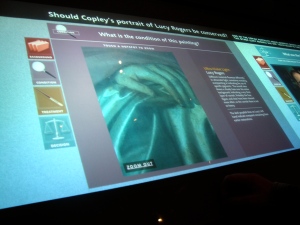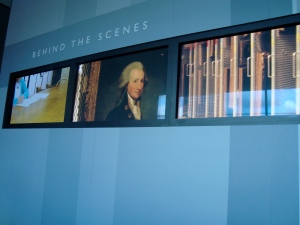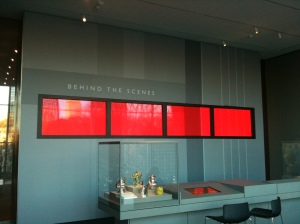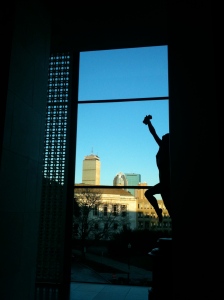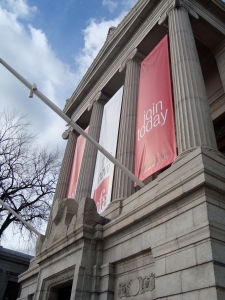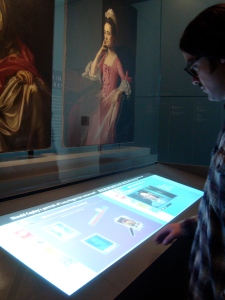In conclusion, I found the Art of the Americas wing at the Museum of Fine Arts in Boston, to be an excellent case study for the purpose of applying a large array of the topics covered in Information Systems for the Visual Arts. I found that the wing, in all its manifestations – from online to on site – epitomizes what an arts institution can do with the tools that are now available, in order to make viewing art an educational and accessible experience to a wide audience.
On site, the museum incorporates elements that follow the current trends in museums, by using technology and transparency to engage audiences. The museum planners had the foresight (not to mention, a serious amount of capital) to understand this trend before it was full-blown, allowing them to create behind-the-scenes videos as they made progress on the wing. These peeks into the inner workings of museum practice are actually what I personally found the most interesting. By creating material about the entire process of displaying art – from conservation to installation – acquaints viewers outside the art world with the museum and the art in a new sort of way. By making the procedures of museum happenings more relatable and more interesting, the MFA has created the potential to make more museum fans. The fact that these videos are accessible in a variety of places – from installations at the museum to YouTube, ensures that the museum is creating accessible experiences for a wide range of people.
The MFA also has successfully incorporated fun, educational interactive touchscreens into the exhibits in the new wing. Using technology to access information is what younger generations have come to expect from learning experiences, and the museum does a great job of accounting for this. At the same time, the touchscreen stations always play second fiddle to the artworks, which I find to be essential. The MFA does a great job of making sure that the technology is only a supplement to the art experience and not the whole experience. I think the struggle to make sure that there is not a disconnect between technologically relayed information (whether a touchscreen, iPhone app, etc) and the artwork it references is going to be one of the major struggles that museums will be dealing with in the future.
The MFA continues its outreach to a wider audience with its website and social networks. I think it handles both aspects in an extremely successful manner. Its goal with its website redesign was to overhaul its image and create a dialogue with past and future visitors, and I think they certainly achieve this. Their “Buzz” page highlights viewer-created content and allows for visitors to engage with the museum on a sort of peer-to-peer level. The museum has definitely allowed for their online presence to become a platform for conversation, rather than a podium from which to speak down to people.
The MFA’s approach to the artworks they’ve installed in the wing furthers this inclusive atmosphere. By incorporating artworks from the entire American hemisphere under one umbrella, they’ve made giant leaps in revising a very established canon. This revisionary thinking hopefully will create a dialogue not just amongst museum visitors, but also among the academic art community. I really appreciated that the museum has placed all American cultures on a level playing field, and I hope other institutions take note.
Since the new wing just opened on November 20th, it’s too soon to tell what the ripple effect – both on the museum’s audience and on the museum world as a whole. From what I have read in articles and seen in comments on the MFA’s social pages, the wing has been incredibly well-received so far. In fact, with perfect conclusive timing, the MFA actually emailed me a visitor survey this very morning, asking me to complete it with my feelings about by visit to the museum and its new wing. The museum seems willing to listen to the audience that it is trying so hard to cultivate and engage. Here’s to hoping that they are ready, and also willing, to be flexible and adapt to the ever-shifting wants and needs of that very audience.



